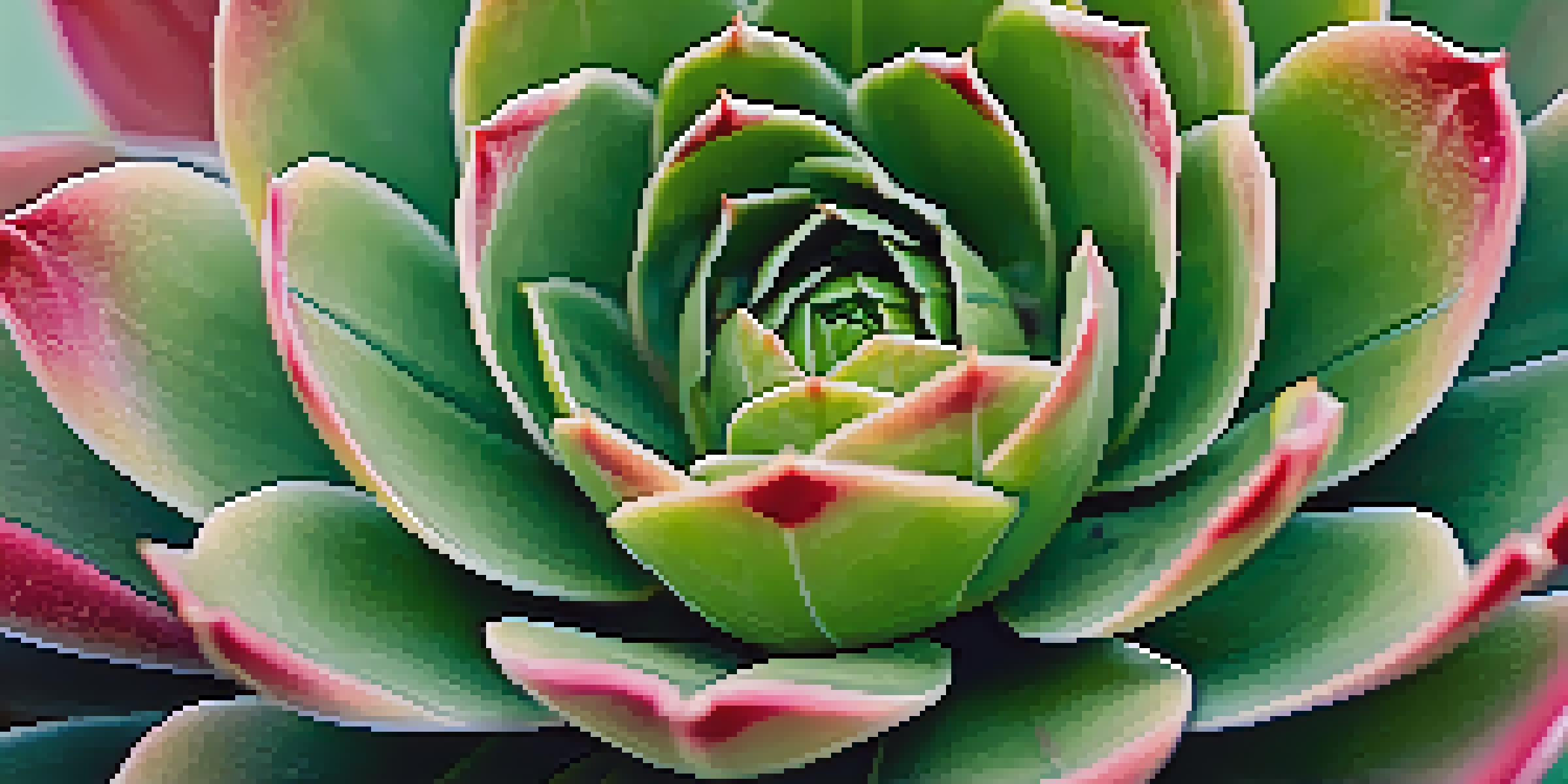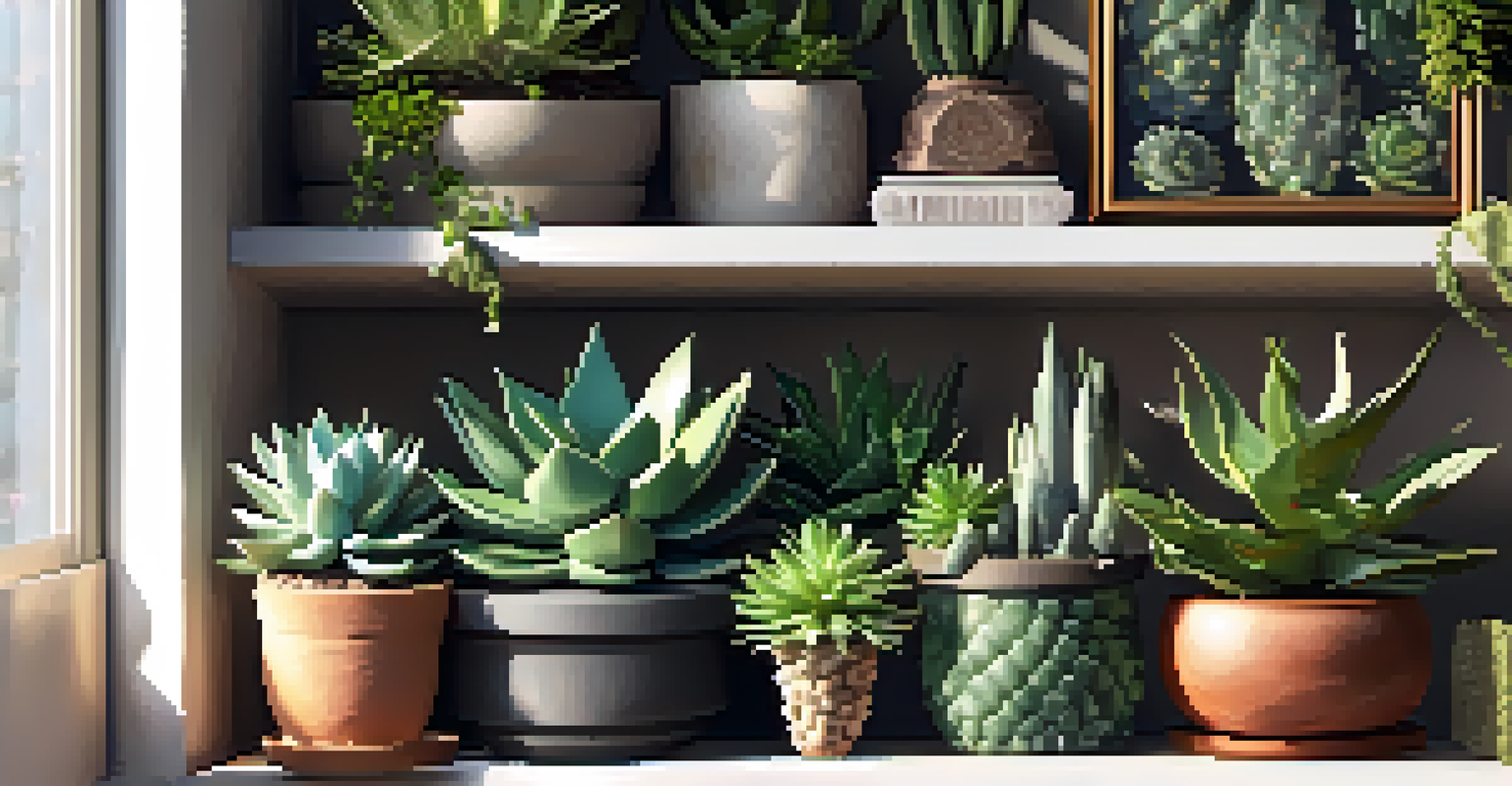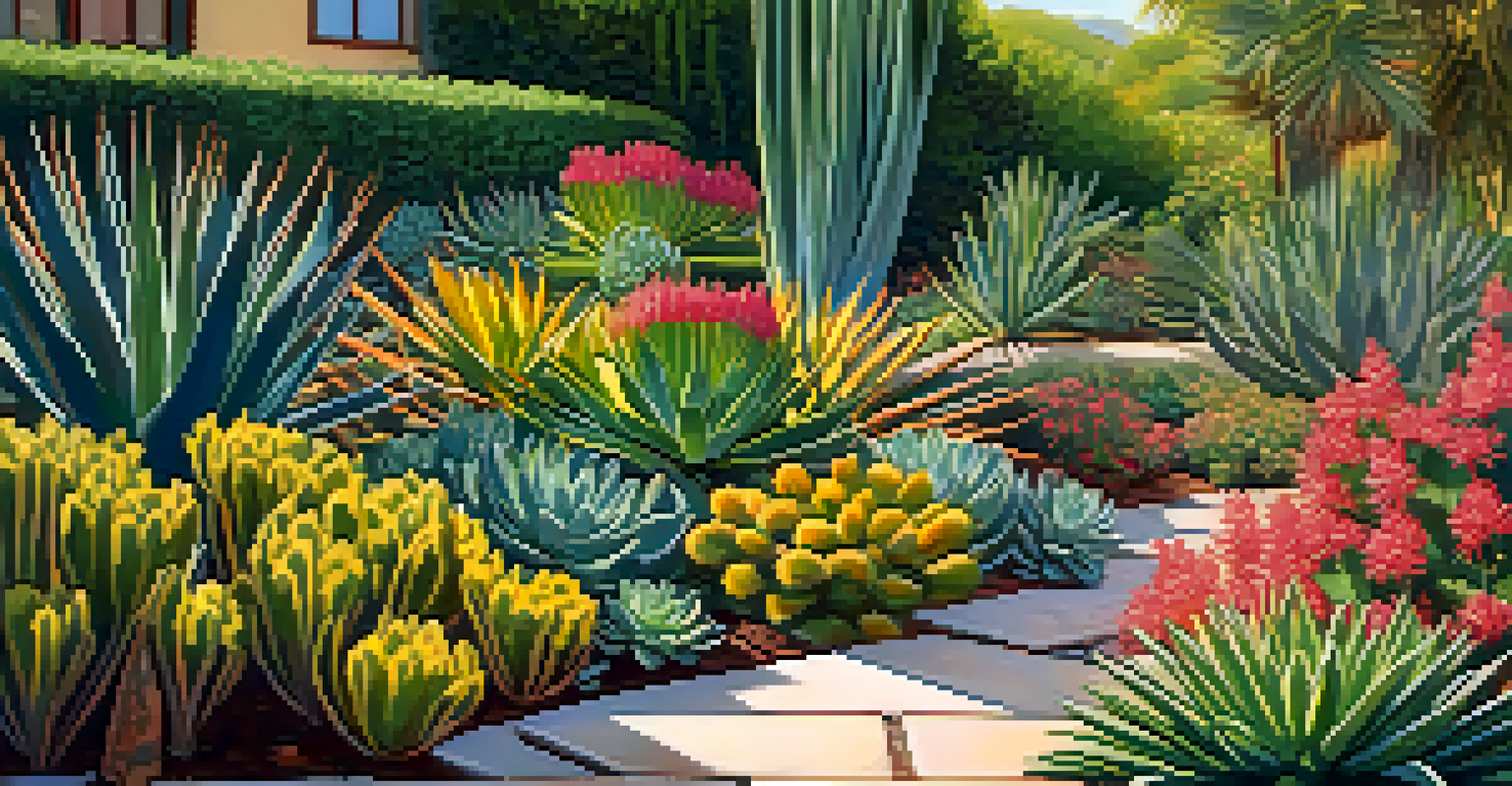Common Succulent Varieties and Their Unique Care Requirements

Introduction to Succulents: A Beginner's Guide
Succulents are fascinating plants known for their thick, fleshy leaves and stems that store water. They come in a variety of shapes, sizes, and colors, making them a popular choice for both indoor and outdoor gardening. Whether you’re a seasoned gardener or just starting out, succulents are relatively easy to care for, which is part of their charm.
Plants are like people. They both need the right environment to thrive.
These plants thrive in dry environments, which is why they are often found in deserts or arid regions. Their unique adaptations allow them to survive long periods without water, making them perfect for busy individuals or those new to plant care. Understanding the specific needs of different varieties can help you keep your succulents healthy and vibrant.
In this article, we’ll explore some common succulent varieties and their unique care requirements, so you can confidently choose the right ones for your collection.
Aloe Vera: The Healing Succulent
Aloe Vera is perhaps one of the most well-known succulents, often celebrated for its medicinal properties. This plant features thick, spiky leaves filled with a soothing gel that can be used for burns, cuts, and skin irritations. Not only is it functional, but its striking appearance makes it a beautiful addition to any space.

When caring for Aloe Vera, it's important to provide it with bright, indirect sunlight. Too much direct sun can scorch its leaves, while too little can stunt its growth. Watering should be infrequent; allowing the soil to dry out completely between waterings helps prevent root rot.
Succulents Are Easy to Care For
These resilient plants thrive in dry conditions, making them perfect for busy lifestyles and beginner gardeners.
This resilient plant thrives in well-draining soil and can be easily propagated through offsets, making it a fantastic choice for both beginners and experienced gardeners.
Echeveria: The Rosette Wonder
Echeveria is a stunning succulent known for its rosette shape and vibrant colors. With varieties ranging from pale green to deep red, these plants can add a pop of color to any collection. They’re often used in arrangements or as focal points in garden beds due to their unique appearance.
Gardening is the purest of human pleasures.
To care for Echeveria, ensure they receive plenty of sunlight, ideally around 6 hours per day. They prefer well-draining soil and should be watered thoroughly but infrequently, allowing the soil to dry out completely between waterings. Overwatering can lead to root rot, so it's crucial to be mindful of their hydration needs.
These succulents can also benefit from occasional fertilization during the growing season to promote healthy growth and vibrant colors.
Jade Plant: The Lucky Charm
The Jade Plant, or Crassula ovata, is often associated with good luck and prosperity, making it a popular choice for homes and offices. Its thick, shiny leaves resemble small coins, symbolizing wealth in many cultures. Beyond its symbolic value, the Jade Plant is also an easy-to-care-for succulent.
This plant thrives in bright light but can adapt to lower light conditions. It prefers to dry out between waterings, so be cautious not to overwater. A well-draining potting mix will help keep the roots healthy and prevent issues related to excess moisture.
Diverse Varieties to Choose From
From Aloe Vera to Agave, each succulent type has unique characteristics and care needs, allowing for personalized gardening experiences.
With proper care, Jade Plants can grow quite large and even produce small white or pink flowers, adding to their charm and appeal.
Sedum: The Groundcover Gem
Sedum, commonly known as stonecrop, is a diverse genus of succulents that includes both groundcover varieties and tall, upright forms. These hardy plants are perfect for rock gardens, borders, or containers, as they spread easily and can thrive in poor soil conditions. Their ability to tolerate drought makes them an excellent choice for low-maintenance gardening.
Caring for Sedum involves providing them with plenty of sunlight, as they flourish in full sun. Watering should be minimal, and the soil should be allowed to dry out between waterings. They are quite forgiving, making them a great option for novice gardeners.
Some Sedum varieties even produce beautiful clusters of flowers in late summer, attracting pollinators like bees and butterflies to your garden.
Haworthia: The Hardy Houseplant
Haworthia is a small, attractive succulent that resembles an Aloe but is generally smaller and more compact. These plants are perfect for indoor gardening, as they thrive in low light and can tolerate a range of conditions. Their unique leaf patterns and textures make them a favorite among plant enthusiasts.
For optimal care, place Haworthia in a spot with bright, indirect light. While they can handle some direct sun, too much can burn their leaves. Water them sparingly, allowing the soil to dry out completely before watering again, as they are susceptible to root rot if overwatered.
Ideal for Indoor and Outdoor Spaces
Succulents can adapt to various environments, making them suitable for both indoor decor and outdoor landscaping.
With their low maintenance needs and charming appearance, Haworthia makes a delightful addition to any indoor plant collection.
Agave: The Bold Statement Plant
Agave is a striking succulent known for its dramatic, spiky leaves that can create a bold focal point in any garden. Many people admire Agave for its architectural beauty and unique forms, which can vary significantly among different species. Some even produce tall flower stalks that can reach impressive heights.
These plants thrive in full sun and require well-draining soil to prevent root rot. Watering should be minimal, as Agave is drought-tolerant and can suffer if left in soggy conditions. They are ideal for xeriscaping or low-water gardens.

Despite their tough exterior, Agave plants can be surprisingly rewarding to grow, especially when they burst into bloom after several years of care.
Conclusion: Choosing the Right Succulents for You
With so many succulent varieties available, choosing the right ones for your home or garden can be an enjoyable adventure. Each type comes with its unique care requirements, but the general principles of bright light, well-draining soil, and minimal watering apply to most. Understanding these basics will help you nurture your plants effectively.
Consider your space and lifestyle when selecting succulents; some may thrive indoors while others prefer outdoor settings. Don't hesitate to experiment with different varieties to find the ones that resonate with you and match your gardening goals.
Ultimately, the joy of growing succulents lies in their resilience and beauty. With a little care and attention, you can create a thriving succulent garden that brings life and color to your surroundings.